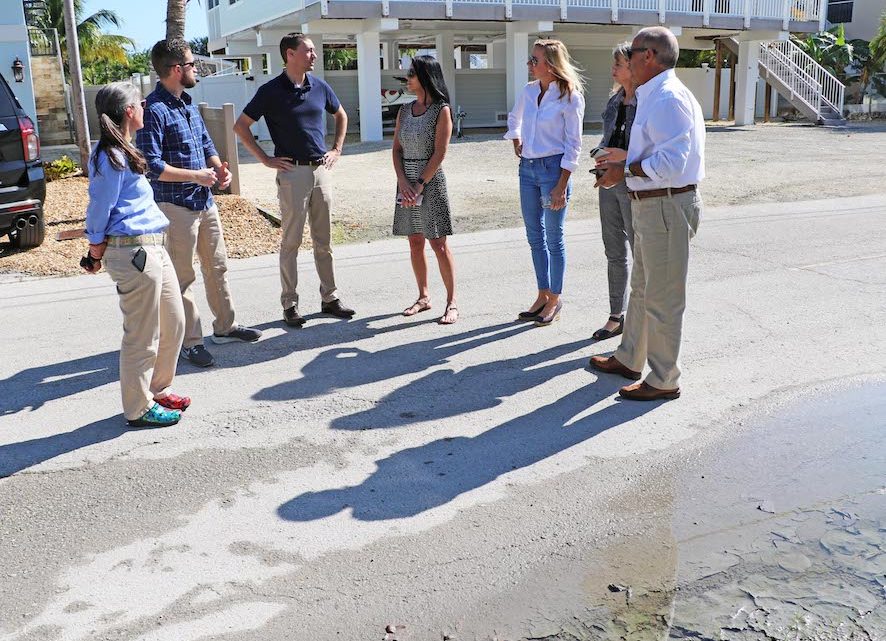Key Largo resident Stephanie Russo meets with State Chief Resilience Officer Wes Brooks and Florida Dept. of Environmental Protection Deputy Secretary Adam Blalock to explain the effects of sea-level rise in her neighborhood.
NEWLY APPOINTED STATE CHIEF RESILIENCE OFFICER & FLORIDA DEP DEPUTY SECRETARY VISIT FLORIDA KEYS TO SEE LOCAL RESILIENCE EFFORTS
KEY LARGO, FL – Newly appointed State Chief Resilience Officer Wes Brooks and Florida Dept. of Environmental Protection Deputy Secretary of Ecosystem Restoration Adam Blalock met with County officials Thursday to discuss local resilience and water quality restoration efforts. Monroe County Commissioner Holly Raschein, County Administrator Roman Gastesi, Monroe County Chief Resilience Officer Rhonda Haag, County Engineer Judy Clarke, and Legislative Affairs Director Lisa Tennyson thanked Brooks and Blalock for the State’s support in the efforts. The group then toured two Key Largo neighborhoods included in the Statewide Flooding Resilience Plan, Twin Lakes and Stillwright Point, and visited an active canal restoration project funded through the Florida Keys Stewardship Act.
“This allowed staff to give a broad overview of Florida Keys’ environmental and resilience challenges and how the County is proactively meeting the challenges,” said Gastesi. “Monroe County can be a model for other coastal communities in resilience and restoration efforts.”
Brooks and Blalock also spoke to residents, like Stephanie Russo, in the Twin Lakes neighborhood. Russo showed how sea-level rise affects her and her neighbors’ quality of life when the roads are inundated with up to 2 feet of water, at one point, for 90 consecutive days. Brooks, who is familiar with the Florida Keys and its unique challenges, said the Florida Keys are a special place that needs to remain special for generations to come.
Haag discussed more than a decade of resilience work the County has been involved with and explained recent updates to the nearly completed Roadway Vulnerability Analysis and Capital Plan. The plan uses environmental and human-use factors in assessing the flooding vulnerability of 300 miles of county roads. “The vulnerable roads are across the entire Florida Keys; therefore, we will need a united front to move forward on funding and construction alternatives given our preliminary assessments,” she said.
Clarke explained why neighborhood-wide flooding mitigation is not easy nor inexpensive. “Water management, stormwater road runoff, and residential properties all have to be considered,” she said. “We wish it were as simple as raising the road, but it isn’t.”
The Monroe County Board of County Commissioners and Tennyson will continue working with these and other agency officials to advance the County’s legislative priorities, including continued support of the Florida Keys Stewardship Act, which funds water quality projects and conserves environmentally sensitive land, and the legislative approval for funding of county projects on the new Resilient Florida list.
[livemarket market_name="KONK Life LiveMarket" limit=3 category=“” show_signup=0 show_more=0]


No Comment